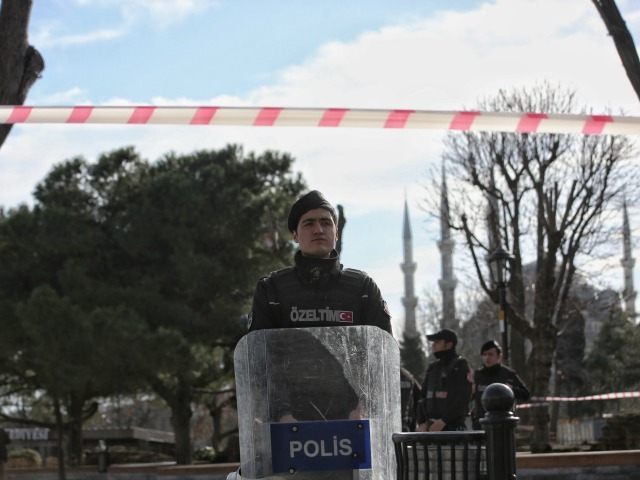The Islamic State suicide bomber who attacked Istanbul on Tuesday, killing 9 German tourists and a Peruvian as well as injuring at least 15 other people, slipped past border security by posing as a Syrian refugee, according to Turkish officials.
The Wall Street Journal suggests the ability of Nabil Fadli to “enter Turkey, register with immigration officials and carry out the attack without triggering any international terror alerts is likely to fuel concerns that Islamic State extremists are exploiting the migrant crisis to sneak across borders to stage attacks.”
The Journal recalls that two of the ISIS-affiliated killers who perpetrated the slaughter in Paris also allegedly traveled in the guise of refugees.
The problem is particularly acute for Turkey, which borders Syria and is currently hosting some 2 million refugees. The Turks have considerable experience in dealing with refugees, and their security concerns are highlighted by a number of bloody attacks in recent years, plus some harrowing near-misses, including a New Year’s Eve bomb plot thwarted at the eleventh hour.
And yet, Fadli – described as a 28-year-old Saudi-born Syrian national – arrived as a “refugee” on January 5, completed the necessary paperwork, and even got fingerprinted without setting off any alerts. Syrian opposition activists later identified him as part of a rebel group absorbed by the Islamic State in 2014.
The UK Daily Mail reports there is security-camera video of the ISIS bomber registering as a Syrian refugee last week:
Turkish Interior Minister Efkan Ala confirmed Fadli was registered and fingerprinted as a Syrian refugee, but stated “he was not on the wanted individuals list, and neither is he on the target individuals list sent to us by other countries.”
The heroic Turkish tour guide credited with saving lives in the attack by shouting a last-second warning, Sibel Satiroglu, said he thought Fadli “appeared to be Turkish-looking,” with a “clean-shaven face and small beard.”
The carnage would surely have been worse, if Satiroglu had not noticed the ISIS terrorist pulling the pin on his suicide vest and raised the alarm. The bomb was powerful enough to shake nearby buildings and was heard across the city. The Daily Mail reports photos taken after the attack “showed corpses and body parts strewn across a square near iconic sites including the Blue Mosque and the Hagia Sophia museum.”
Turkish authorities have also arrested three Russian men linked to the Islamic State in connection with the Istanbul suicide bombing.

COMMENTS
Please let us know if you're having issues with commenting.